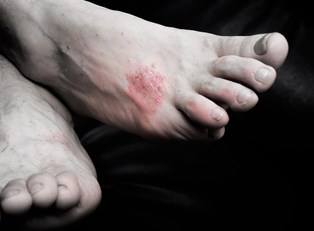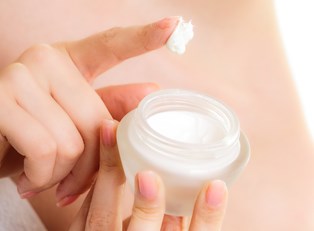Guttate psoriasis is one of five forms of a relatively common skin condition called psoriasis. Each type of psoriasis has its own unique rash that appears on the skin surface, and guttate psoriasis is characterized by small, red spots over the chest, back, and arms. The medical term for one of these spots is “papule,” meaning a solid, raised bump on the skin that is often red in color and isn't fluid-filled.
In most cases, guttate psoriasis papules solely appear on the chest, back, and arms and, though usually painless, can cause an itching sensation. Guttate psoriasis can be recurring, as patients often describe flares separated by extended periods during which no symptoms are present. While no cure exists currently, there are several effective treatments available.
Causes
One or more forms of psoriasis may result when skin contains cells that grow much faster than neighboring cells. This uneven growth causes the raised, inflamed, and often flaky regions that define the condition. The guttate psoriasis rash can thus be thought of as small areas of skin where extra cells collect.
The ultimate cause of guttate psoriasis is not known, though most patients have specific genetic factors and medical histories. For example, patients diagnosed with guttate psoriasis often report recent respiratory infection, strep throat, or tonsillitis. Scientific studies revealed that patients who develop guttate psoriasis soon after one or more of these triggering events almost always have unique forms of the psoriasis-susceptibility gene and show family histories of psoriasis.
Symptoms
Guttate psoriasis manifests as small, round, raised, and red lesions on the surface of the skin that are 1-10 mm in diameter. In the majority of cases, guttate-type psoriasis is restricted to the chest, back and arms, though more severe cases involve lesions on the legs, scalp, neck, ears, face, and groin. The word guttate derives from the Latin “gutta,” meaning “drop,” and this reflects the drop-like appearance of the papules. The most troubling effect of guttate psoriasis is a subjectively negative impact on the appearance of a patient's skin.
Guttate psoriasis also shows hallmark developmental, stable, and remission phases. Lesions appear at onset and develop in number and severity during the first month, remain stable during the second month, and then begin to fade during the third month. To diagnose guttate psoriasis, your physician will conduct a visual examination of your skin.
Treatments
Most instances of guttate psoriasis will spontaneously resolve without any treatment. However, patients often choose from one of several treatment options. The most common choice is a corticosteroid cream. Corticosteroids reduce inflammation and help prevent excess skin cell growth.
Many clinical studies also support exposure to sunlight or artificial UV light to accelerate the remission of guttate lesions. PUVA, the newest treatment, combines topical administration of the drug psoralen and exposure to UV-A. Psoralen increases the ability of UV light to limit the rate of growth of new skin cells. Most treated cases of guttate psoriasis will remain in remission.



